Sign up. Be inspired. Get clicking.
The environmental impact of coffee growing and transportation
1 February 2024
Coffee, our morning favorite, has a dark side that's causing trouble for the environment. It's the second most traded commodity after oil, affecting our planet greatly. We drink 1.3 kilos of it every year, with 2 billion cups enjoyed daily around the world.
This huge demand leads to deforestation, habitat loss, and harm to ecosystems in coffee-growing areas.
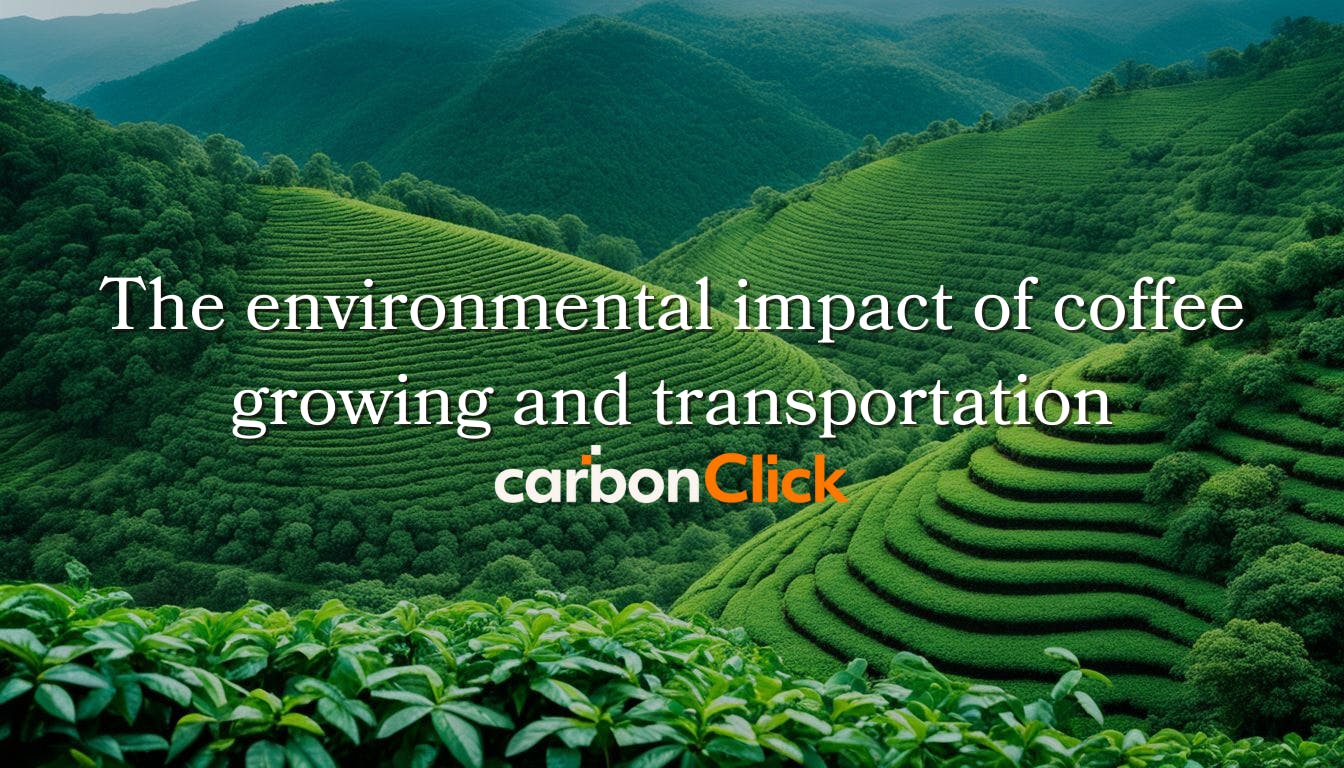
The global coffee industry
The coffee industry supports around 125 million people globally, but it comes with significant environmental costs. Over the past 30 years, coffee production has increased by approximately 60%, contributing to environmental degradation. Climate change is further exacerbating the situation by threatening high-quality coffee crops and worsening the impact.
The U.S. plays a major role as a primary coffee importer, and American coffee consumption contributes to water pollution, soil degradation, and reduced biodiversity.
Notably, producing one pound of roasted coffee results in about 11 pounds of carbon emissions, which is roughly equivalent to driving a car for 11 miles. Additionally, Americans discard around 50 billion coffee cups each year, many of which are non-recyclable and end up in landfills. These factors collectively highlight the substantial environmental challenges associated with our coffee consumption.
Key Takeaways:
- Coffee is the second most traded commodity globally, after oil.
- Approximately 2 billion cups of coffee are consumed daily worldwide.
- Coffee production has grown by about 60% in the last 30 years.
- Producing one pound of roasted coffee emits about 11 pounds of carbon emissions.
- Americans dispose of about 50 billion coffee cups annually, many of which are non-recyclable.
- Coffee production contributes to deforestation, habitat loss, and water pollution.
- Climate change is endangering high-quality coffee crops, creating a cycle of environmental harm.
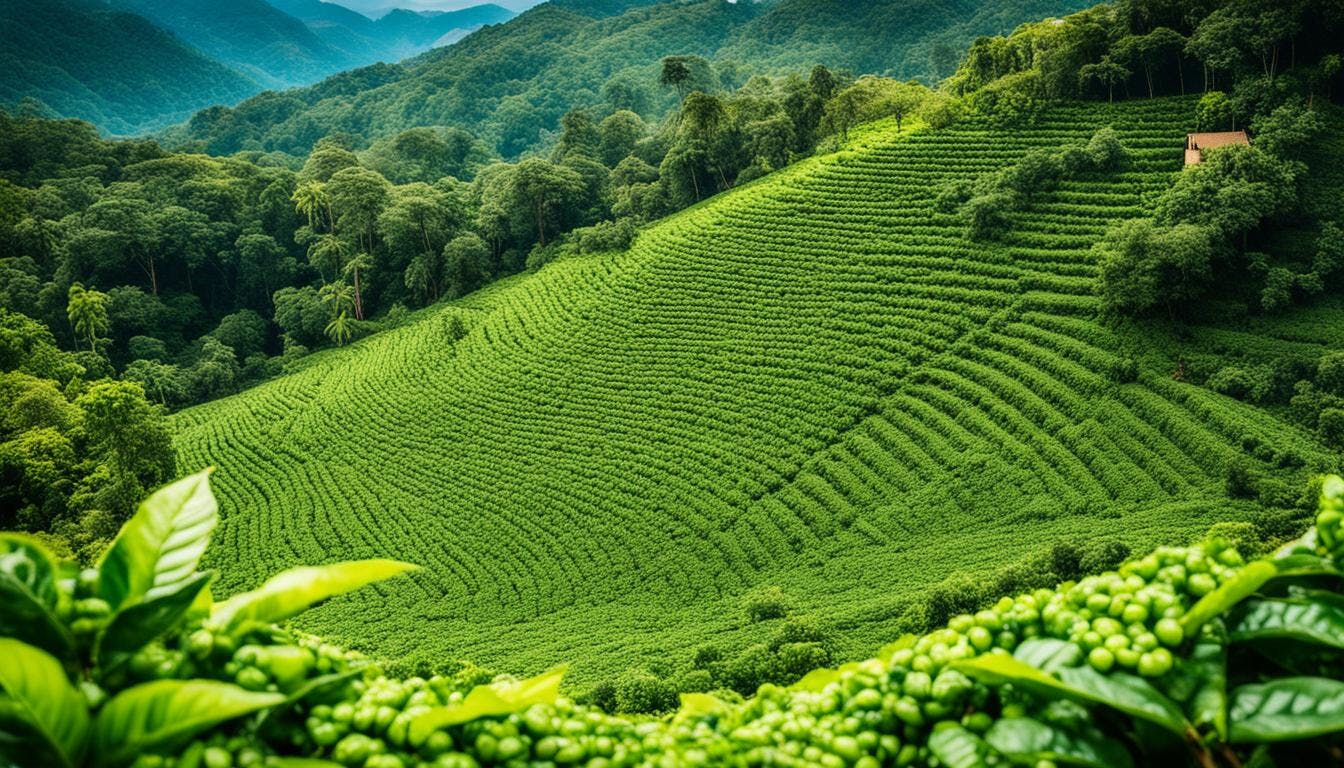
Coffee: A global commodity with environmental consequences
Coffee is the second most traded item in the world, after oil. It supports the economies of over 70 countries, with Brazil, Vietnam, and Colombia leading in production. The growth of the coffee industry has raised concerns about its impact on the environment.
Coffee's Global Market Presence
The global coffee trade constitutes approximately 2.5% of the world’s agricultural commodity trade by value, with an estimated worth of about $31 billion annually. Major coffee-importing countries like the US, Germany, and Italy also play a significant role in exporting roasted beans.
Worldwide Coffee Consumption
Coffee is a beloved beverage worldwide, with around 2 billion cups consumed daily. In the US alone, about 400 million cups are enjoyed each day. Between October 2021 and September 2022, Europe consumed approximately 3.3 million tonnes of coffee, while North America’s consumption totalled around 1.9 million tonnes.
Production and Demand Growth
In 2020, the coffee belt produced around 9,903 kilotonnes of coffee. Arabica beans account for roughly 60% of global production, with robusta beans making up the remainder. Despite fluctuations in coffee prices, demand continues to rise, which raises concerns about the potential diseases linked to coffee farming practices.
"Switching to sustainable coffee-growing practices could reduce the crop's carbon footprint by over 75%."
Environmental effects
When we enjoy our coffee, we should think about its environmental effects. The coffee industry's growth impacts biodiversity. It's vital to adopt sustainable practices now.
Deforestation and habitat loss in coffee-growing regions
The popularity of coffee comes with significant environmental costs. Over the past 30 years, coffee consumption has increased by around 60%, which has contributed to considerable deforestation in coffee-growing regions, particularly in Central America.
The shift towards sun-tolerant coffee varieties has exacerbated habitat destruction. These sun-grown coffee farms generally lack the biodiversity found in traditional shade-grown coffee plantations. Shade-grown coffee farms support a diverse range of species and help maintain ecosystem diversity.
Deforestation for coffee cultivation not only damages local ecosystems but also poses public health risks. Sun-grown coffee often requires greater use of pesticides, which can have detrimental effects on both human health and the environment. Additionally, deforestation releases carbon dioxide into the atmosphere, further exacerbating climate change.
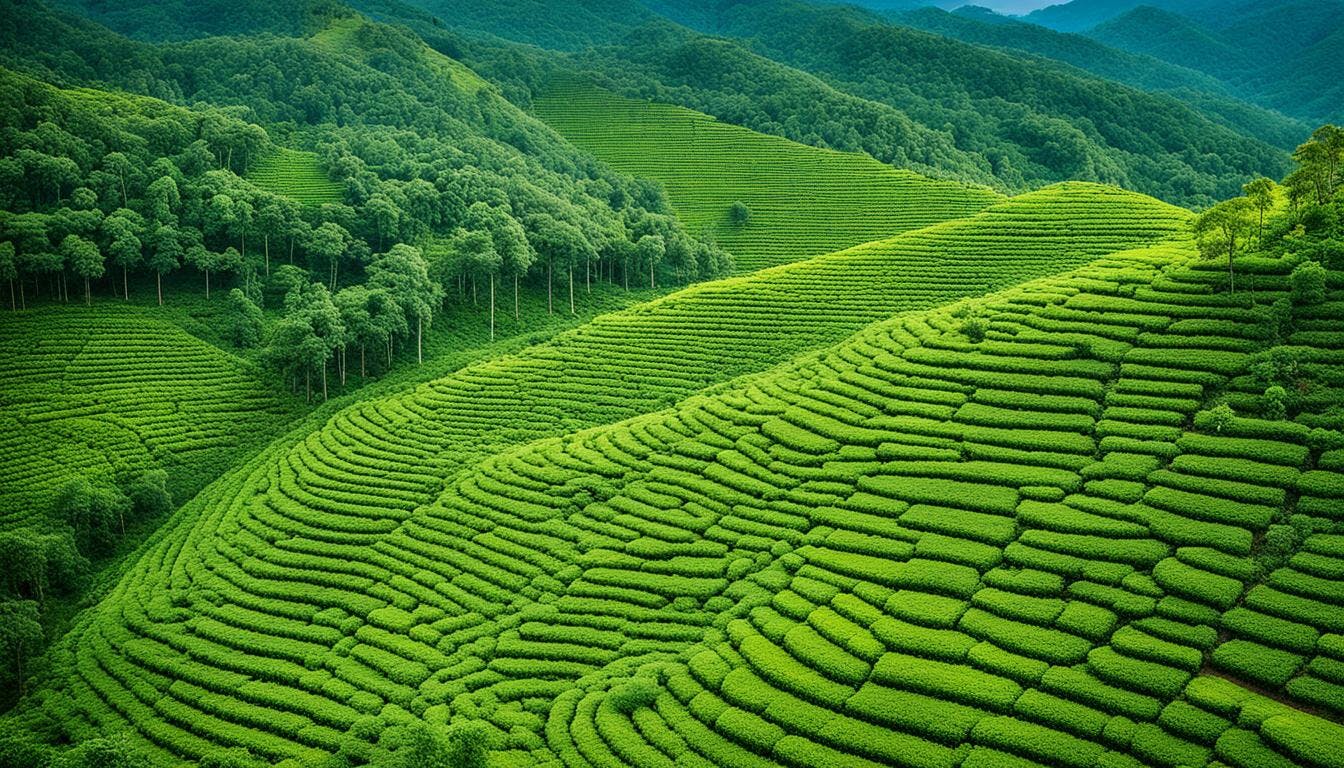
"Between 1,600 and 2,000 million cups of coffee are consumed daily worldwide."
Coffee expansion impact
Brazil, the biggest coffee producer, keeps expanding its farms. This expansion harms vital forests. The loss of forests is causing a big loss of biodiversity, with many species losing their homes.
- Traditional shade-grown coffee supports wildlife populations
- Sun-grown coffee plantations often lack biodiversity
- Deforestation for coffee contributes to environmental change
- Pesticide use in sun-grown coffee poses health and environmental risks
We need to understand how our coffee habits affect the environment. By choosing shade-grown or organic coffee, we can lessen the harm to our planet's ecosystems.
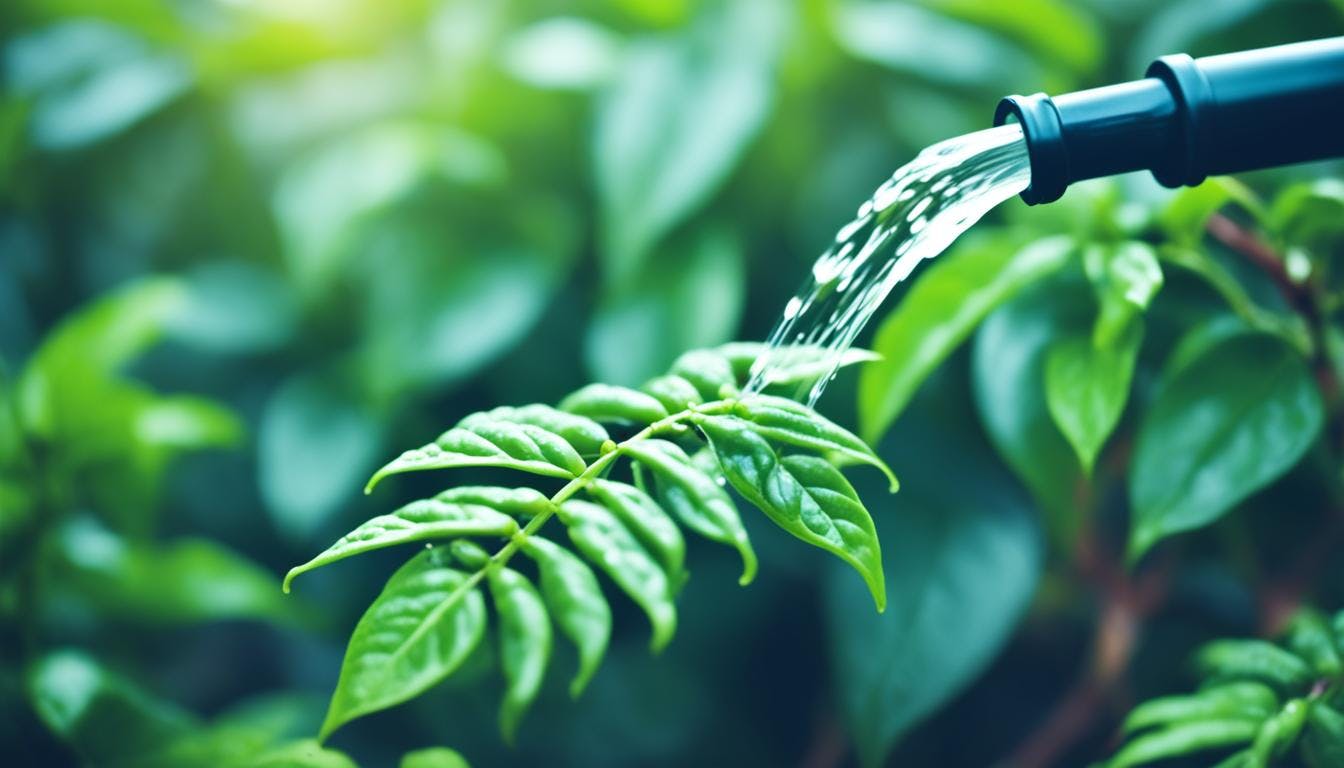
Water usage and pollution in coffee production
Coffee production has a significant impact on water resources, leading to environmental pollution and ecological disruption due to the substantial water usage involved in coffee farming. Let’s explore the facts and potential solutions.
The Water-Intensive Nature of Coffee
Producing coffee requires a considerable amount of water. On average, it takes about 140 litres of water to produce a single cup of coffee, accounting for various stages including cultivation and processing. The wet processing stage, in particular, uses large quantities of water and generates significant amounts of wastewater, which can strain local water supplies and potentially pollute nearby water sources.
The Wastewater Dilemma
The coffee processing industry produces considerable wastewater. If not managed properly, this wastewater can lead to soil and water pollution, posing risks to public health. The use of chemicals in coffee farming exacerbates the issue, potentially introducing harmful substances into the environment.
Innovations for a Sustainable Future
There is, however, progress being made. The coffee industry is beginning to address these challenges with innovative processing technologies. Techniques such as fully-washed and honey processing are designed to reduce water usage. Some of these methods have been shown to decrease water contamination by up to 74% without compromising coffee quality.
Additionally, certifications like Fairtrade and Rainforest Alliance are promoting sustainable practices in coffee production, encouraging better water management and reduced pollution. These efforts are crucial for combating environmental damage and protecting our water resources.
As coffee enthusiasts, we can contribute to these positive changes by choosing sustainably produced coffee. By making informed choices, we can enjoy our morning coffee while minimising our impact on the planet.
Soil degradation and erosion in coffee plantations
Coffee plantations face significant challenges with soil degradation and erosion. The way coffee is farmed depletes the land's nutrients, making the soil less fertile and productive. This issue affects coffee yields and can contribute to the spread of diseases.
Recent statistics highlight the severity of the problem:
- Approximately one square inch of rainforest is destroyed for every cup of coffee consumed.
- Soil organic matter losses in tropical soils can occur within 5 years after conversion to agricultural land.
- Monocropping in coffee plantations leads to the depletion of nutrients in the soil.
The problem extends beyond soil health. Sun exposure exacerbates soil degradation, creating a cycle of environmental harm that is difficult to reverse without intervention.
To address these issues, many farmers are adopting sustainable practices. These include growing coffee under shade, practising organic farming, and controlling erosion through techniques such as terracing and cover crops. By implementing these methods, we can maintain soil health, reduce disease spread, and help ensure the future sustainability of coffee production.
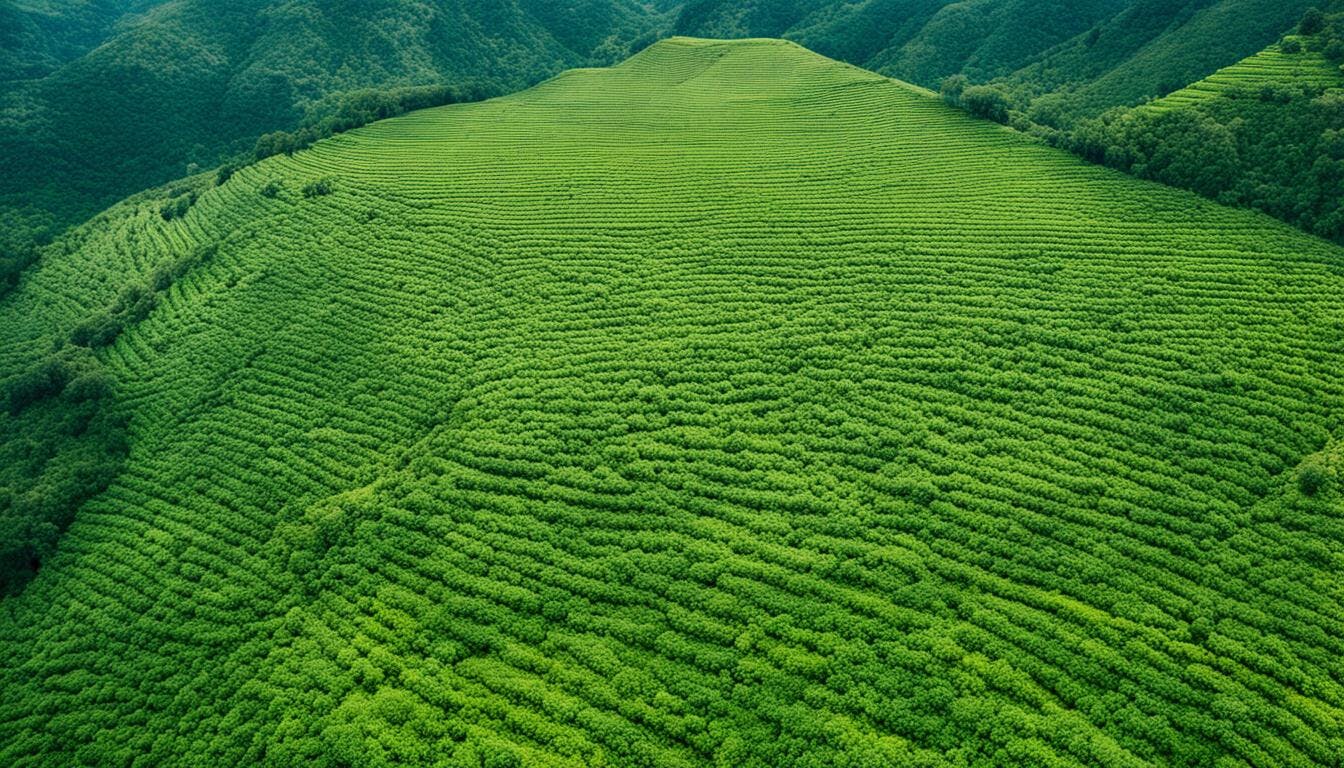
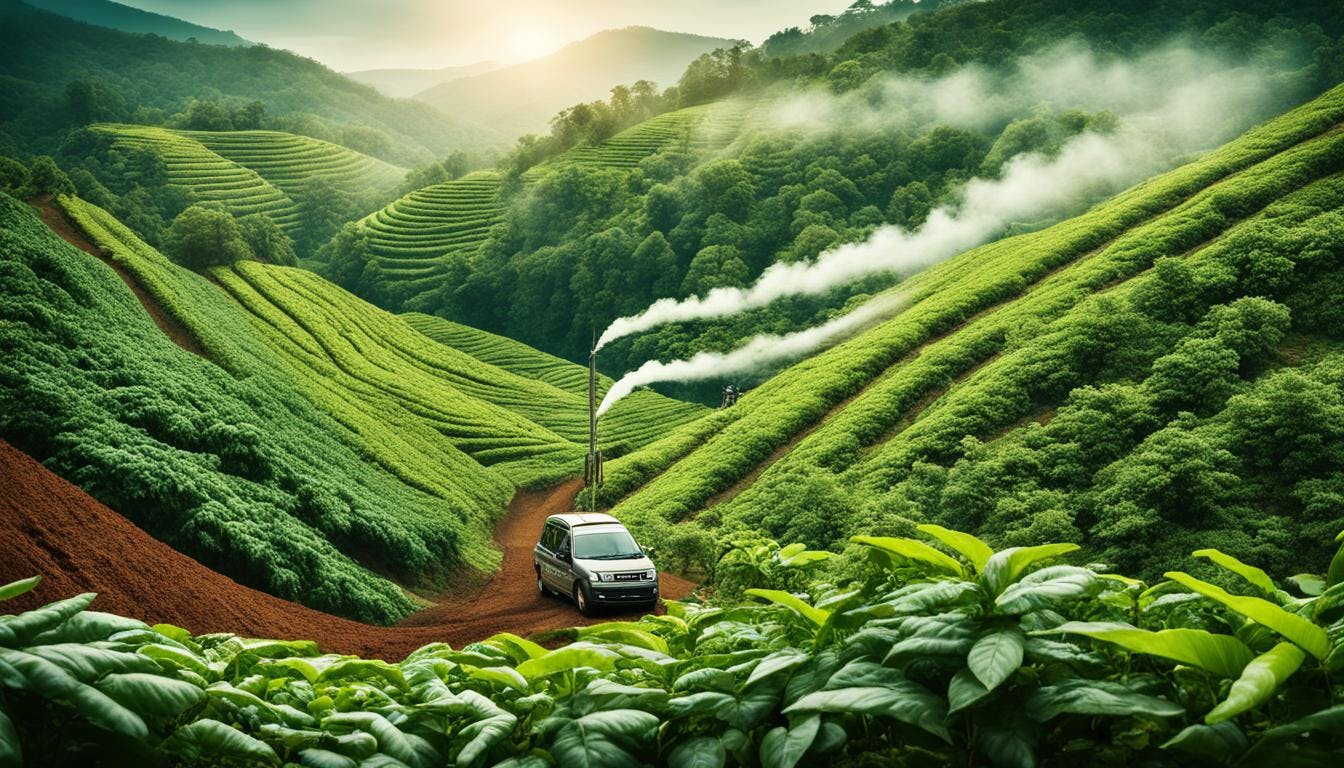
The environmental impact of coffee growing and transportation
Coffee production has a significant impact on the environment. From cultivation to consumption, each stage contributes to greenhouse gas emissions. We’ll examine how growing, processing, and transporting coffee affects its carbon footprint.
Carbon Footprint of Coffee Cultivation
Coffee farming is associated with environmental change and contributes to approximately 5% of global deforestation. Smallholders, who account for up to 80% of the world’s coffee producers, typically manage smaller plots of land, resulting in a smaller carbon footprint compared to larger farms.
Emissions from Coffee Processing and Roasting
The environmental impact of coffee processing varies. Natural processing is relatively water-efficient, whereas washed processing consumes more water. Roasting also contributes to emissions. A 2021 study indicated that coffee production ranks as the second-largest emitter of greenhouse gases after coffee export.
Transportation's Contribution to Coffee's Carbon Footprint
Transporting coffee globally adds to its carbon footprint. International transportation is responsible for 15% of the greenhouse gases associated with coffee. Exporting coffee contributes an additional 6-11% to total CO2 emissions, primarily due to cargo shipping. On average, a single cup of coffee can produce up to 50 grams of CO2, excluding packaging.
Coffee's impact goes beyond just production. It includes waste from roasting and disposable cups in shops. These issues show why we need sustainable practices. They help reduce public health risks and infectious diseases linked to a poor environment.
"Sustainable coffee production in Brazil and Vietnam resulted in carbon footprints 36 and 22 times lower than conventional methods."
Climate change: A threat to coffee production
Environmental change poses a significant threat to coffee production worldwide. Rising temperatures and shifting rainfall patterns are making it increasingly difficult for coffee plants to thrive. This situation not only harms the planet but also adversely affects those who rely on coffee farming for their livelihoods.
Global Warming's Impact on Coffee-Growing Regions
The equatorial regions, where most coffee is cultivated, are experiencing the effects of environmental change. Even minor temperature fluctuations can significantly impact coffee production. Experts estimate that by 2050, up to 50% of the land currently suitable for coffee could become unsuitable, putting 47% of the world’s coffee production at risk.
Increased Risk of Pests and Diseases
Environmental change is also introducing new challenges for coffee farmers. Increased rainfall can lead to higher incidences of pests and diseases that thrive in moist conditions, potentially devastating crops. For example, during the 2012-2013 period, Central American farmers lost up to 85% of their coffee production to coffee leaf rust, a fungal disease exacerbated by changing weather patterns.
Adapting Coffee Varieties to Changing Climates
In response to these challenges, the coffee industry is exploring solutions. Scientists are developing new varieties of Arabica coffee that are more resistant to higher temperatures. Some farmers are relocating their coffee plantations to higher altitudes and employing agroforestry practices to mitigate temperature increases. These measures aim to protect both the coffee industry and the environment from the effects of global warming.
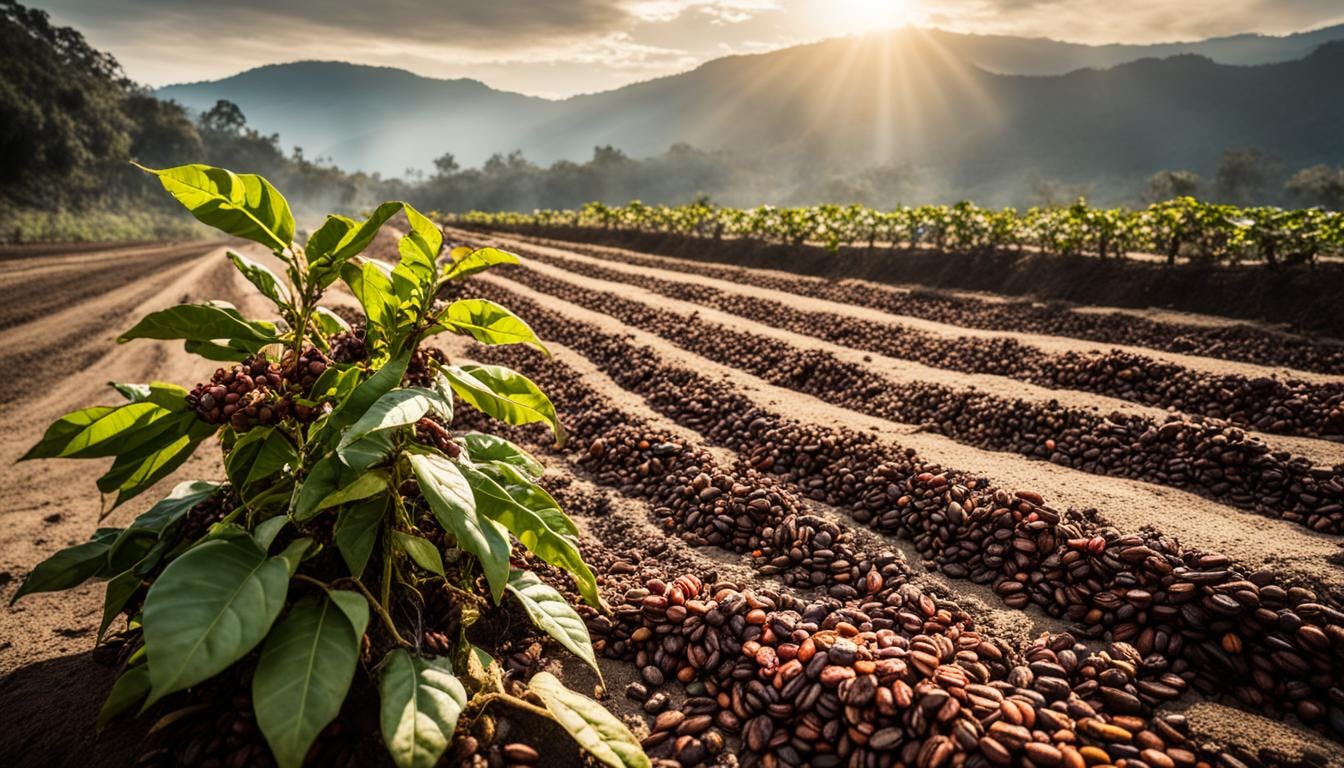
"Environmental change is not just an environmental issue, it's a coffee issue. We need to act now to protect our morning brew and the millions who depend on it for their livelihood."
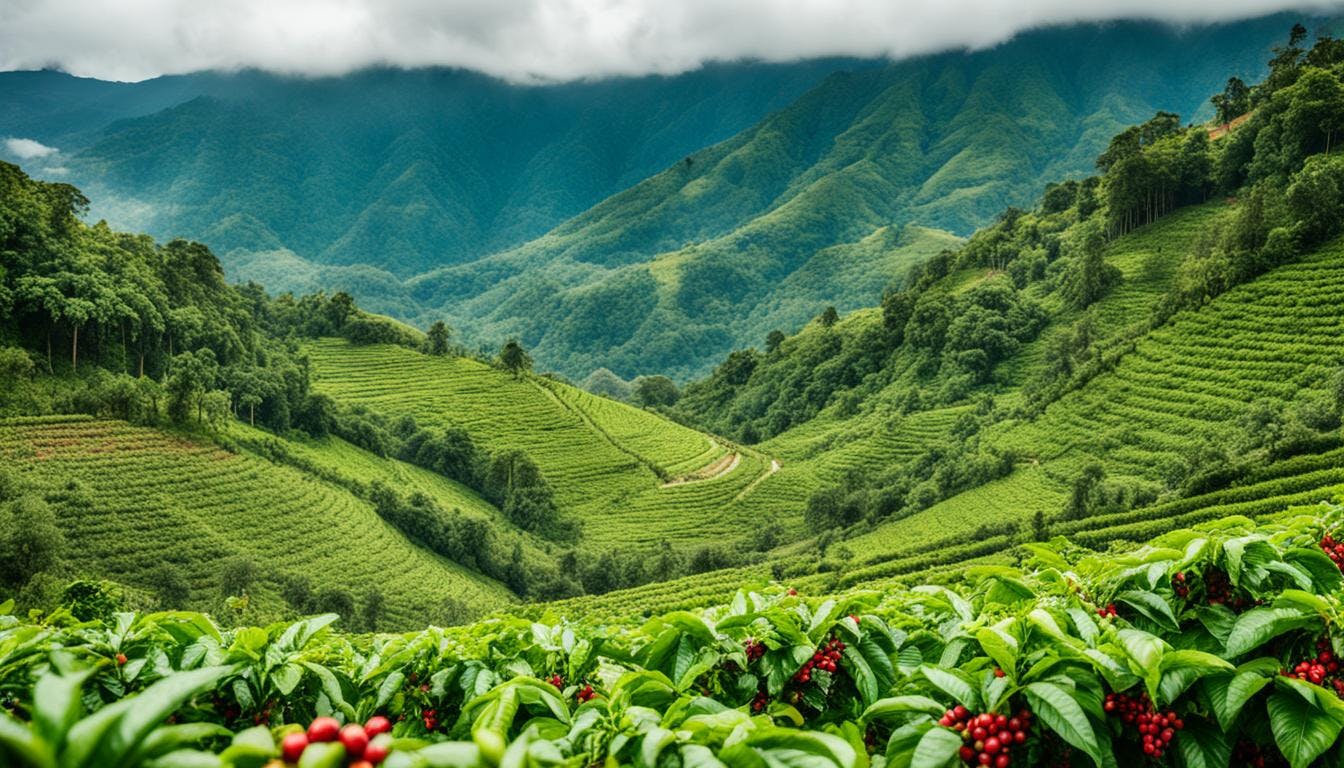
Sustainable coffee growing practices
The coffee industry is evolving, with brands and businesses increasingly focusing on the social, economic, and environmental impacts of coffee production. Environmental change is a significant threat to coffee-growing regions, prompting farmers to adopt sustainable methods.
Agroforestry represents a major advancement. It allows farmers to obtain multiple harvests from a single tree, benefits soil health, and supports biodiversity. High-shade ecosystems not only use less water but also provide habitats for wildlife, which is beneficial for the environment.
Integrated pest management is another crucial approach. It maintains high coffee quality while minimising environmental harm. For example, cultivating coffee alongside forest trees helps to control pests naturally.
Sustainable coffee farming extends beyond environmental benefits. It also involves economic and ethical considerations. Although these methods may incur higher initial costs, they can result in improved coffee quality and potentially offset these expenses over time.
Air pollution remains a significant issue in coffee production. Sustainable practices can help mitigate this by converting coffee husks into fuel and adopting new technologies to reduce emissions. Producing green ammonia is another strategy to decrease reliance on fossil fuels.
As buyers, we have a big part to play. By picking sustainably grown coffee, we can push for change in the coffee world. We support farmers who care about the planet.
"Sustainable agricultural inputs can help minimize the carbon footprint."
The role of agroforestry in Coffee production
Agroforestry is becoming a key method to address ecological issues in coffee production. It involves combining coffee plants with trees from the forest, which benefits both the environment and farmers.
Benefits of Shade-Grown Coffee
Shade-grown coffee offers several advantages. In southern Mexico, farms with up to 48% shade cover have shown coffee yields to be 30% higher compared to those with full sun exposure. In northern Nicaragua, shade-grown coffee is reported to have superior taste and appearance.
Biodiversity Conservation through Agroforestry
Agroforestry fosters biodiversity by providing habitat for various plants and animals, thus maintaining ecological equilibrium. It also helps manage diseases by naturally controlling pests. The presence of trees regulates temperature and humidity, reducing water loss and emissions of harmful gases.
These benefits extend to human health, highlighting the interconnectedness of our wellbeing with environmental and animal health.
Economic Advantages for Coffee Farmers
Agroforestry also brings economic benefits to coffee farmers. It allows them to increase their income and become more resilient to market fluctuations and environmental changes. The approach reduces the need for chemical inputs, saving costs.
Moreover, coffee grown in shaded conditions is often of higher quality, which can enhance its market value.
Research by CIRAD has developed new coffee plant varieties that thrive in shaded environments, producing 10-30% more yield compared to traditional methods. As more farmers adopt agroforestry, this practice could significantly advance sustainable coffee production.
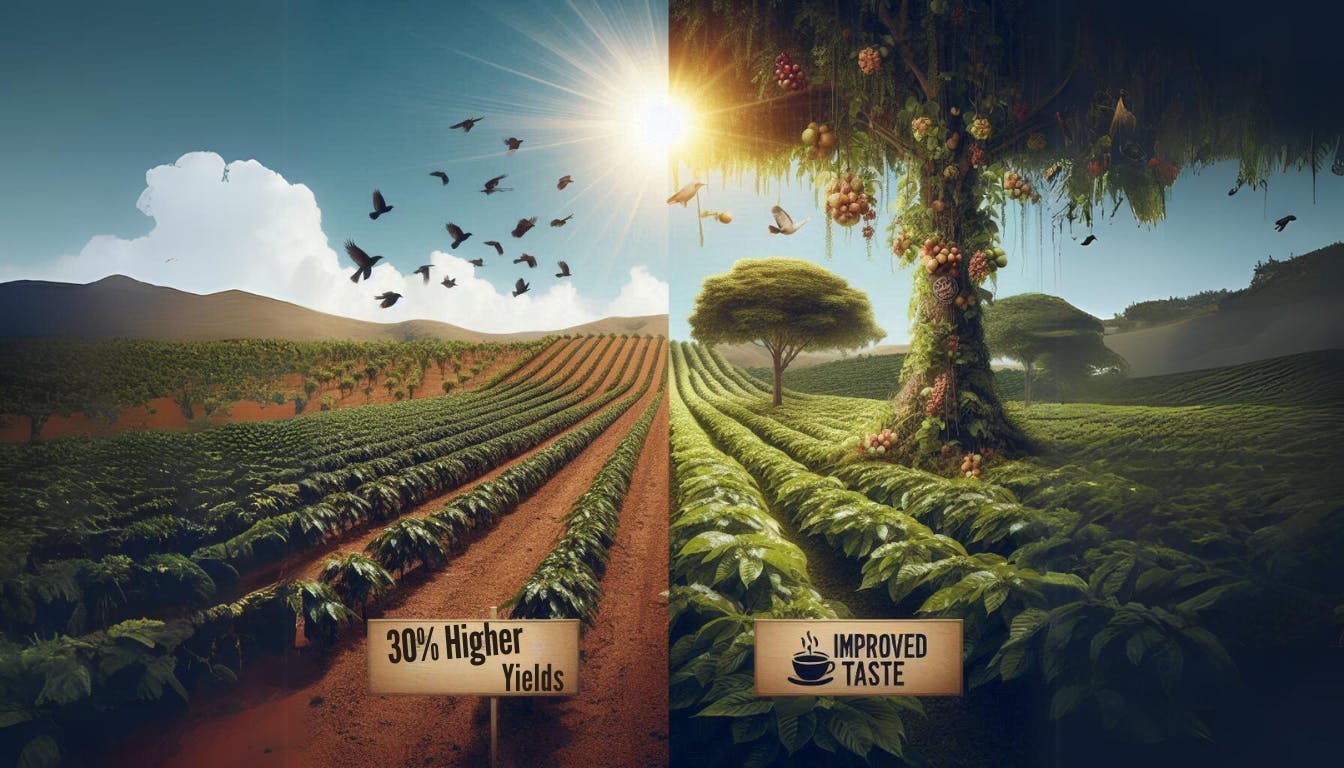
Consumer choices and environmental impact
Many of us are unaware of how our daily coffee choices impact the environment. In the US, approximately 66% of adults drink coffee every day. This widespread coffee consumption has a significant environmental footprint. The production and transportation of coffee consume substantial amounts of energy, with more calories burned in the process than are consumed in many rich countries.
Our coffee choices can either exacerbate or alleviate environmental issues. For instance, a simple black coffee results in about 21 grams of CO2 emissions. Adding milk can double this amount, with large lattes potentially reaching up to 340 grams of CO2. Opting for shade-grown or organic coffee supports sustainable farming practices and helps address environmental health issues.
Using reusable cups instead of disposable ones can make a significant difference. Americans dispose of approximately 50 billion coffee cups each year. By selecting sustainable packaging and being mindful of additives, we can reduce our coffee’s environmental impact. It’s important to remember that most of coffee's environmental impact occurs after harvesting. Our choices can guide the coffee industry toward a more sustainable future.
17 South Street
Auckland 1010
New Zealand
info@carbonclick.com- -
- X
Subscribe now to stay up to date with CarbonClick, carbon offsetting and climate action.
By signing up you agree to our Privacy Policy.


